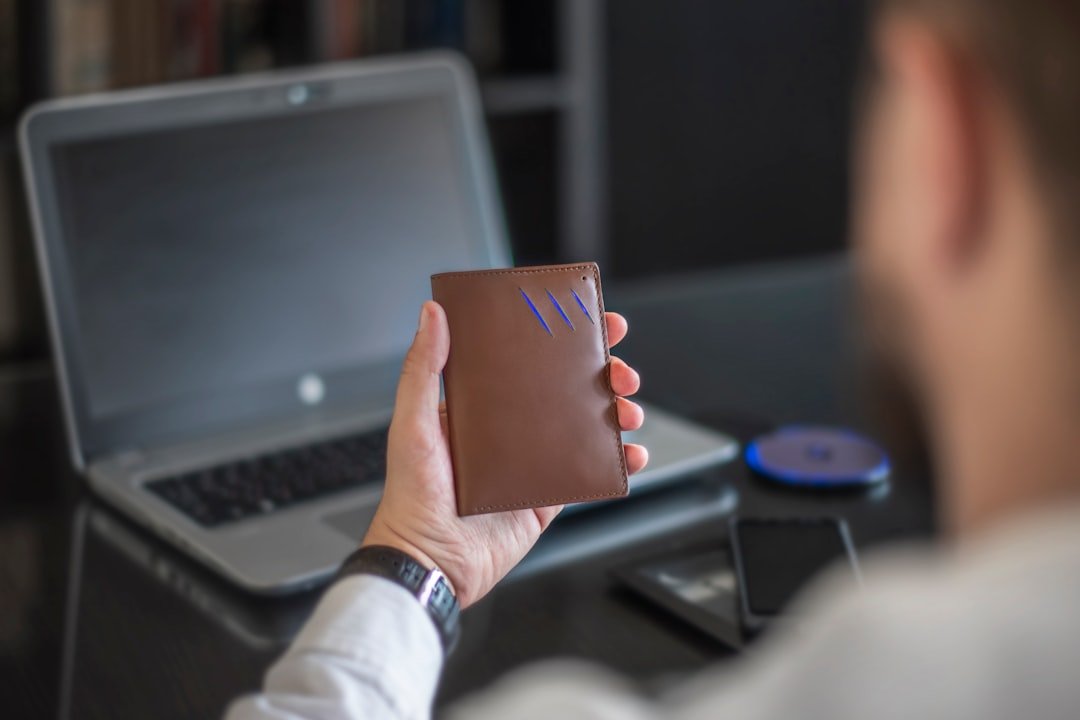Does your wallet feel like a black hole, swallowing important cards and receipts into a chaotic abyss? You are not alone.

We all know the frustration. You're at the checkout, the line grows longer, and you’re frantically digging through a mountain of old receipts, expired coupons, and loyalty cards for stores you haven't visited in years. It’s a small problem, yes, but these tiny frustrations add up. They drain our energy and make us feel less in control. For a long time, my wallet was a symbol of the larger chaos I felt in my life, reflecting the clutter not just in my pockets but also in my habits.
I remember when I decided to take back control of my life, one step at a time. It wasn't about massive, overnight changes. It was about small, consistent wins, like building a productive routine or tackling my gaming addiction. And guess what? Organizing my wallet was one of those small, almost therapeutic acts that brought a sense of order. Losing over 110 pounds taught me that big changes start with tiny, daily choices. A well-organized wallet might seem minor, but it's a daily win. It’s a reflection of intentional living.
So, let's turn that wallet from a chaotic mess into a lean, efficient tool that serves you well. Here are ten practical hacks I’ve used to keep my own wallet organized and my mind a little clearer.
1. The Full Empty Reset
First things first. Take everything out of your wallet. And I mean everything. Spread it all out on a table. This is like hitting the reset button. You cannot organize clutter while it is still crammed in its usual spot. Seeing the full extent of the mess is often the first step to fixing it.
2. Categorize and Conquer
Once everything is out, start sorting. Make piles:
- Keep: Essential IDs, credit/debit cards, health insurance.
- Maybe: Loyalty cards you actually use, gift cards with balances.
- Toss: Expired coupons, old receipts, business cards you don't need, expired IDs.
- Home: Things that belong elsewhere, like spare keys or tiny notes.
This step alone often reveals how much unnecessary junk we carry around.
3. Embrace the Digital Age for Loyalty Cards
Do you really need ten different plastic loyalty cards cluttering up your wallet? Probably not. Many stores now have apps or can look up your rewards with your phone number. For others, apps like Stocard or Key Ring can store digital versions of your cards. This frees up so much space. I switched to this years ago, and it was a game-changer. My wallet instantly felt lighter.
4. One Card Per Slot Rule
This is a simple but powerful rule. Resist the urge to cram multiple cards into one slot. It stretches the leather, makes cards harder to find, and generally looks messy. Each card gets its own designated home. This small discipline makes a huge difference in the long run. It’s a lot like how I learned to manage my time for deep work—one task at a time, focused and intentional.
5. Prune Your Receipts Daily
Receipts are the weeds of the wallet garden. They multiply quickly. If you need a receipt for returns or budgeting, take a photo with your phone or file it away immediately when you get home. Otherwise, toss it. Make it a habit to clean out receipts every evening or morning. This simple action prevents accumulation.
6. Cash Smart, Not Cash Heavy
How much cash do you really need? In today's world, often very little. Carry enough for emergencies or small purchases, but don't stuff your wallet with large bills or excessive amounts. This reduces bulk and the risk of losing a lot of money if your wallet goes missing. It's about being prepared, not overloaded.
7. The Power of "Just-in-Case" Essentials
Think about what you truly need for daily life. Beyond your ID and primary payment method, what else is crucial? Maybe a single emergency contact card, or a very small photo of loved ones. Leave bulky items or rarely used cards at home. My goal is always a slim wallet, containing only what I need for the day ahead.
8. Choose the Right Wallet for Your Lifestyle
Not all wallets are created equal. If you carry a lot of cards, a bifold might be better than a minimalist cardholder. If you rarely use cash, a slim, front-pocket wallet could be perfect. Choose a wallet that fits your actual needs and encourages organization, rather than fighting against it. Sometimes, a new tool inspires new habits.
9. Schedule Regular "Wallet Check-ups"
Organization isn't a one-time event; it's an ongoing practice. Set a reminder once a week—maybe every Sunday evening—to quickly go through your wallet. Clear out old receipts, return cards that have wandered from their slots, and make sure everything is where it should be. This quick check takes less than five minutes and prevents chaos from building up. This habit is like my daily gratitude practice; small consistent effort keeps things aligned.
10. Separate Rarely Used Items
Do you have a loyalty card for a store you visit twice a year? Or an extra credit card you keep for large purchases? Don't carry these daily. Keep them in a separate cardholder at home, or in a different compartment of your bag. Your main wallet should only hold what you need for most days. This declutters your primary access point.
Organizing your wallet might seem like a small thing, but these small actions build momentum. They show you that you can take control. They reinforce discipline and bring a quiet sense of accomplishment. Just like building a productive routine or choosing healthy habits, it starts with an intention and a few consistent steps.
What one hack can you try today to bring more order to your wallet? Start small. See how a little organization can lighten your load.